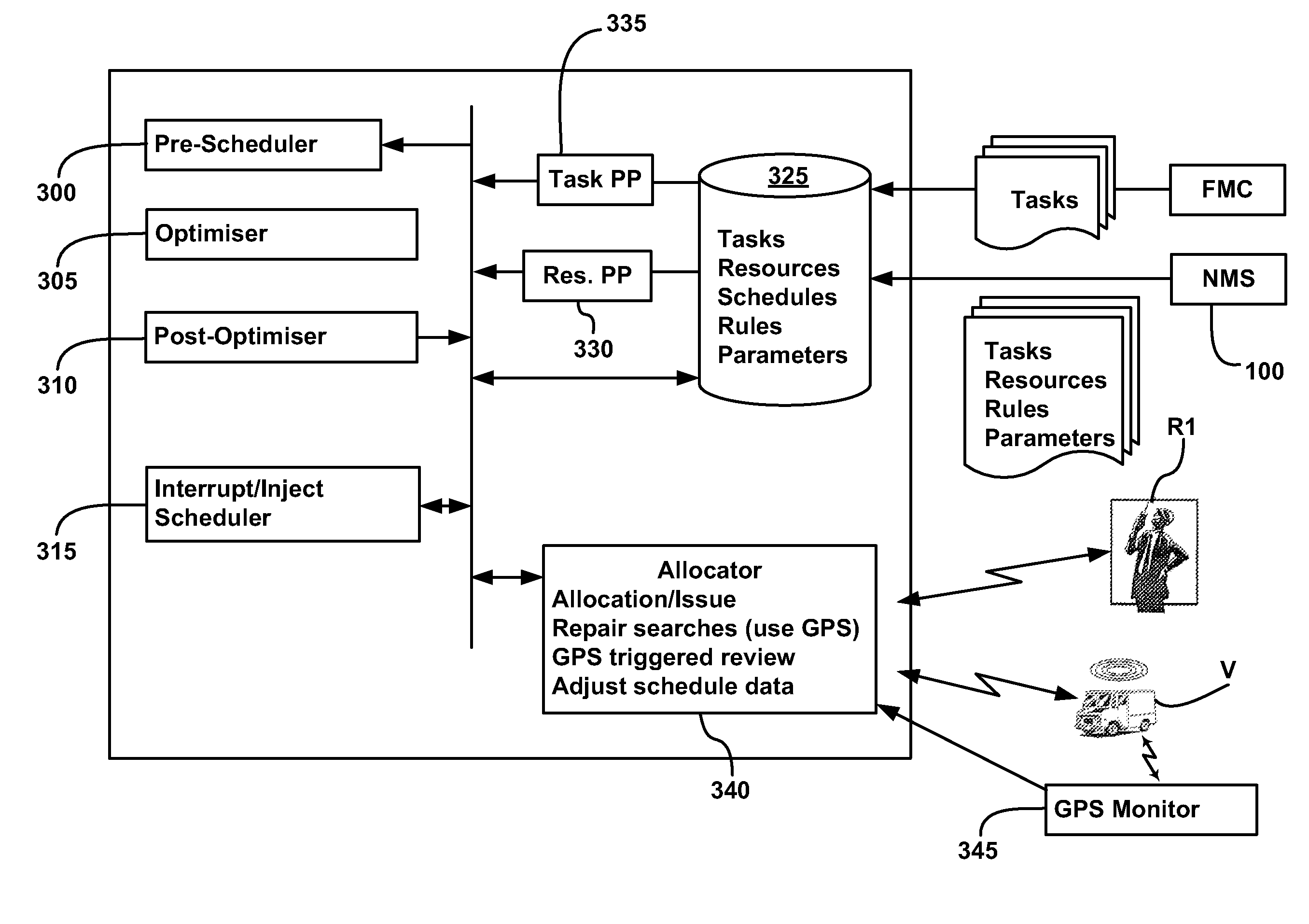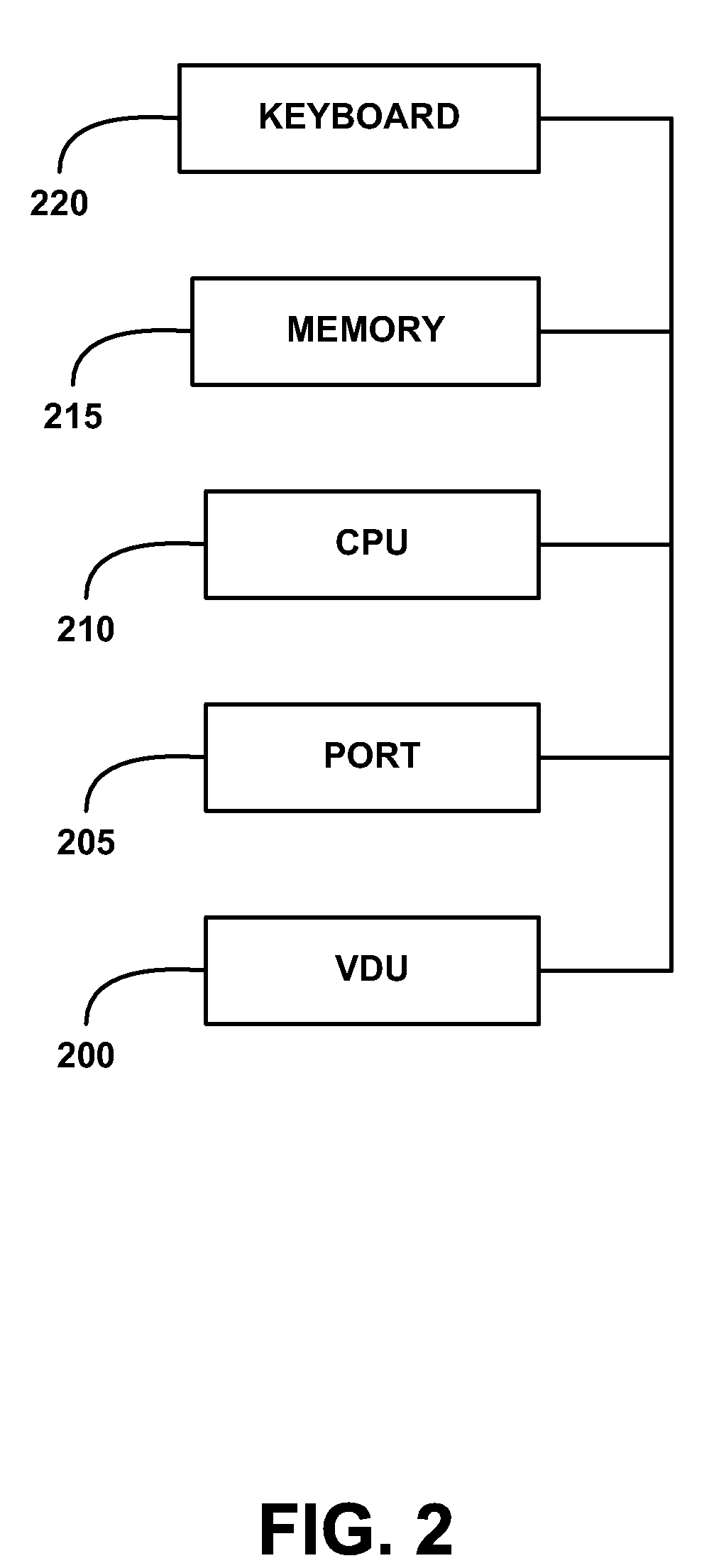Resource scheduling apparatus and method
- Summary
- Abstract
- Description
- Claims
- Application Information
AI Technical Summary
Benefits of technology
Problems solved by technology
Method used
Image
Examples
Embodiment Construction
[0057]As described above, embodiments of the invention are concerned with utilising actual location data, which may be derived from a positioning system, when generating schedules. Details of the infrastructure, algorithms and implementation will be described in detail below, but first the task scheduling problem domain within which embodiments of the invention operate will be presented.
General Principles of Task Scheduling
[0058]Referring to FIG. 1, there is shown a telecommunications system N which is monitored by a fault-monitoring system FMC. The fault monitoring system FMC detects faults in the network N which require attention, and also receives inputs from a network management system 100, originated for example by a human operator or an automated system, for example to schedule planned maintenance or to generate task (or “job”) requests to be performed by a field force of technicians (“resources”) R1, R2, R3. The task requests are input to a resource allocation computer system...
PUM
 Login to View More
Login to View More Abstract
Description
Claims
Application Information
 Login to View More
Login to View More - R&D
- Intellectual Property
- Life Sciences
- Materials
- Tech Scout
- Unparalleled Data Quality
- Higher Quality Content
- 60% Fewer Hallucinations
Browse by: Latest US Patents, China's latest patents, Technical Efficacy Thesaurus, Application Domain, Technology Topic, Popular Technical Reports.
© 2025 PatSnap. All rights reserved.Legal|Privacy policy|Modern Slavery Act Transparency Statement|Sitemap|About US| Contact US: help@patsnap.com



